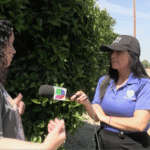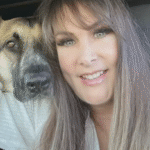Pet Stop Hialeah
1755 W 8th Ave
Hialeah, FL 33010
(305) 887-9888
Date and time of CAPS investigation: 08/23/21; 1159
Approximate number of animals observed at time of investigation: about 200 birds of various species, two dogs, and 22 rabbits
Note: All violations cited below are from Miami-Dade County Code of Ordinances Chapter 5 – Animals and Fowl
The store sold various species of birds, as well as rabbits. There were several species of parrots for sale in cages in the middle of the store, including a blue macaw in a cage containing only a food dish, water dish, and single rope hanging down with a few small chew toys on it (Sec. 5-4. Cruelty to animals (b)(5) to fail to provide the animal with wholesome exercise). All of the feathers on the underside of the bird’s torso were gone, and about 30% of the feathers on the outside of the bird’s wings were gone, indicative of being pulled out from stress. Several other cages had parakeets and small pet birds, with the birds totaling about 200 in all.
Small birds and rabbits were at the back (east end) of the store and lined up along the north end of the store as well. The enclosures had plastic food and water dishes on their floorings, with some small bird enclosures having water dishes on their walls, though most were on the floorings. Cages had wire floorings, set over trays with newspaper on them. There were two chicken cages, each holding two brown chickens at the back of the store next to the rear door. This door was open when I was present. It did not appear that air conditioning was on despite a high that day of 91 degrees F (humidity would have made the heat index much higher) and a morning low of 78 degrees F. I didn’t not have a thermostat to measure the indoor temperature. Under Sec. 5-9 (c) Ventilation, the ambient temperature must be between 58 degrees F and 85 degrees F.
A rabbit cage was stacked above the chicken enclosure. These cages were not a double unit (Sec. 5-9. – Standards of care (d)(5) Primary enclosures shall not be placed on top of or below another animal’s primary enclosure; it is provided, however, that primary enclosures manufactured in stacked units may be utilized, provided that each individual unit complies with the requirements of this section.). Four stacked rabbit enclosures were next to them.
The rabbit cages had four to five animals per cage, each cage being about two feet long, and 1.5 feet wide and tall (Sec. 5-4 (b)(5) to keep the animal in an enclosure that does not permit the animal to make normal postural movements). Next to the rabbit cages were four rows of rock dove cages, each stacked four to five cages high, with one to two birds per cage. Nearby were two stacks of three cages each, with three to four birds per cage, being a combination of rock doves and white doves. Also nearby was a cage containing about 35 smaller birds (Sec. 5-4 (b)(5). Many of the bird cages did not have perches or not enough perches (Sec. 5-4 (b)(5).
All of the cages containing rabbits and small birds had several days of feces coating their newspapers (Sec. 5-9. – Standards of Care (e) Sanitation). Bird cages with water dishes on the floorings, including those of most dove enclosures, had dark brown water from feces in the water (Sec. 5-4 (b)(3) food and water that is free from contaminants) (Sec. 5-4 (b)(5) to fail to supply the animals with a sufficient quantity of wholesome food and water (Sec. 5-9 (e) Sanitation). Water and food dishes of all enclosures had dark brown and white feces staining and spotting the surfaces of the dishes (Sec. 5-4 (b)(3) (Sec. 5-4 (b)(5) (Sec. 5-9 (e). Food and water dishes in rabbit cages had their top edges chewed around them.
In addition, the floorings of all enclosures in the store were made of wire, instead of being solid surfaces. This included enclosures for all species of birds, as well as all rabbits. Smaller birds were not able to place their feet in a manner so that all of their toes and most of their feet could be on solid bars at once. (Sec. 5-9 (d)(2) The floors of the primary enclosure shall be a solid surface … and protects each animal’s feet and toes from injury).
Cage wires had feces stains on all sides of their surfaces, inside and out, with many of the cages having rusty metal (Sec. 5-9 (d)(3) Primary enclosures shall be maintained in good repair). Stains were evident on the wires on the outside of cages – those facing customers. There was also build up on the wires on the insides of the cages. It was apparent that the enclosures had not been cleaned in some time, with the feces allowed to accumulate in closures of different species (Sec.5-4 (b) (5) to keep the animal in an enclosure that contains excess excreta) (Sec. 5-9 (e) Sanitation). These enclosures were in close proximity to each other and next to an open door that wild birds could use to access the building.
Despite the rear door being open, the smell of feces and ammonia was powerful at the back of the store (5-9 (c) Ventilation).
An owner (Hispanic male, about 60 years old, 5’6”, 160 lbs., with short grey hair, a receding hairline, and glasses with no rim at the bottom), who spoke broken English, allowed me access through an open doorway at the south end of the store to an office, and an adjacent room that held two white dogs, who appeared to be Maltese, in a cage with a food and water dish. The cage was about three feet long, and two feet wide and tall. I spoke to a woman (Hispanic female, about 60 years old, 5’5”, 120 lbs., with short black hair) who told me the dogs were in “daycare.” I asked her about buying puppies from the store, and she said that I could buy two Shih Tzu puppies that were two months old. The man told me that the puppies belonged to a friend of his, had been given two shots each, and cost $1,000 each. I asked if I would buy the puppies from him or the breeder, and he said that I would buy them from the breeder, but that the puppies would be brought to the store for the transaction.
I contacted Miami Dade Animal Services on 8/23/21 to explain the situation but was disconnected before I could get a case number. However, I did give my name, phone number, and explained the violations I saw at the store. On 8/25/21, I called again and was told the case is number 2110357982, under Inspector Sam Gascovich. I made sure to reiterate that I have video footage and photographs of violations. Receiving no call from Gascovich, I called again at 1333 on 8/31/21, and was told by a woman at Animal Services that Gascovich went to Pet Stop Hialeah on 8/24/21, noting in his report that the store was warm because of an AC unit that was down. However, a door was open for ventilation and no animals were panting. Gascovich noted all animals had feed and water, there was no accumulation of animal waste, and all animal enclosures were clean. He noted that he needed to remind the owners that all birds need perches in their cages. In the call, I again pointed out that I have video footage and pictures of violations of violations of Chapter 5 regulations. I was told that Gascovich had been made aware of that on 8/25/21, and that he has my name and number to contact me.
On 9/6/21, I received a call from Gascovich, who said that on 8/24/21 he told the owners to move the rabbits into more cages to give them more space. A couple days later he went back to the store. He said that the owners then told him they would give the rabbits away, since they hadn’t been able to sell them. Gascovich said that he had reminded them to add perches to two cages, and to keep the cages cleaner. He said that he plans to go back to them in a couple days from our call to see what the conditions are like. Gascovich said he issued no citations to them in his visits, but instead had them improve conditions.




